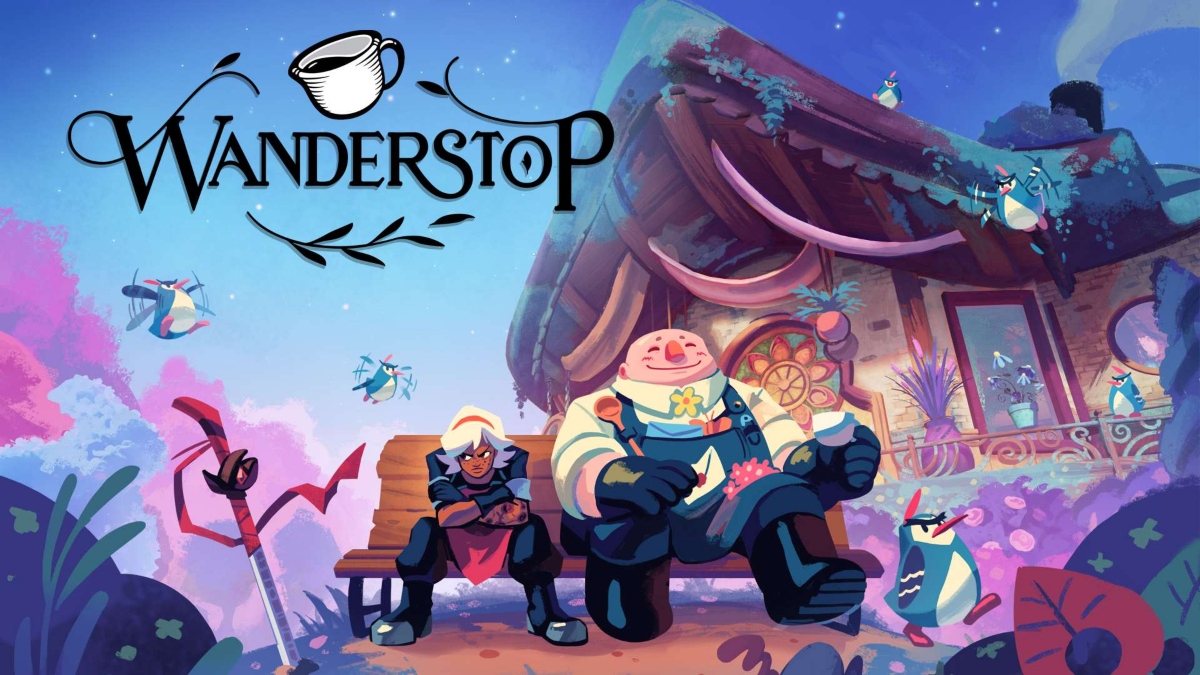Developed by Nintendo EAD. Published by Nintendo. Released September 25, 2015. Available on Nintendo 3DS. Review copy provided by publisher.
My favorite item in Animal Crossing: Happy Home Designer is a glass panel. There are folding screens and solid, opaque panels for dividing rooms, but I didn’t find them as alluring as the glass. Inside the sleek, invisible walls of the towering glass upon its blanche-white base, I have built many things: Corner offices, ominous red buttons, reading rooms of luxurious decadence, and even bathrooms. Something about the interplay of open, transparent glass and dividing, impassable barrier strikes me as a fascinating aspect of design.
An important design aspect, as Animal Crossing: Happy Home Designer is a pretty big departure from the existing Animal Crossing titles. Where the existing titles put players in the role of real-time town inhabitant and part-time employee, Happy Home Designer eschews the existing formula and instead casts you a new hire to budding business Nook’s Homes.


Employees at Nook’s Homes are in charge of taking in clients, and using their skills and abilities to design the interiors (and later exteriors) of homes for the villagers in the rustic plains, snow-capped mountains, beaches, deserts, and riverfront properties. Clients are assigned to the player for the first few missions, tutorials for the game’s primary design mechanics, and later players could roam the city’s streets looking for potential clients interested in a new home.
As a new hire to Nook’s Homes, the player is put under the tutelage of a seemingly hard-working pink otter named Lottie, the niece of Happy Home Academy’s Lyle. In addition to Lyle, Nook’s Homes is filled with several familiar faces from previous Animal Crossing games, including Happy Home Showcase’s Digby, fan favorite town hall liaison Isabelle, and the infamous loan-shark-turned-realtor Tom Nook, owner of the business.
Although the office is industrious, with people milling around frequently, very little work ever happens outside of the player’s input. Nook spends his workdays out on the golfing green, Digby and Lyle always seem to be in the office industriously doing nothing, and Lottie never moves from her computer. It’s up to the player’s initiative to not only find clients, but to pick out which lot they’ll get, bring them to their house, and finally design the yard, exterior, and interior. The only other person in the office that seems to do any work is Isabelle, who stops by in the mornings offering contract work from the town hall, putting the player in charge of designing municipal buildings like schools, hospitals, restaurants, shops, and cafés.
The central design mechanic in Happy Home Designer is very polished, giving the player a floorplan on the bottom screen, with the ability to select furniture from catalogs at the top of the screen, then drag them into place on the floor plan directly. Tapping furniture will rotate it, dragging the stylus across the screen will let the player select multiple objects at once, and objects appear with different symbols to indicate if they can be put on top of one another or if they can have things put on them.
Every design job will come with its own requirements and new furniture that fits the theme of the place being designed. Isabelle’s jobs, for the city’s facilities, will have minimal requirements that demand certain types of furniture (beds, chairs, tables, cash registers, etc.), but for the most part, freedom of design is given to the player. Client jobs will come with pre-boxed furniture that fits that client’s style, usually two or three items along a theme. Technically following the rules is the only requirement, especially for the city buildings, but ignoring the theme is never penalized. Designing the restaurant so it looks like a seedy bar, for example, is perfectly possible. The villagers that populate the bar will behave as though it’s a restaurant, even though it plays grungy rock music and is lit in varying shades of neon.
Because the requirements are so simple and baseline, the whole design aspect feels a little bit directionless. If the client wants “A themed hotel,” for example, and packages a nice bed and bathtub, the player can simply leave the bathtub and bed in the middle of a room, with the flooring and wallpaper still bare foundations, and submit the house as-is, with no further additions to interior or yard. The game suggests the player take it seriously, but they’re under no obligation to do so, and comes with no penalty if they don’t.
That lack of real requirements might explain why everyone in Nook’s Homes is listless and lazy, but it also makes the experience feel incomplete. With the exception of the touch screen controls for home design, and a bit more freedom in choosing layouts for the buildings, there isn’t any furniture here that couldn’t also be found in New Leaf. Which is, at this point, three years old. The only really new feature, the city facilities designs, are just unique in their floorplans, not their furniture. Character animations, furniture, sound effects, outfits, and villagers are largely recycled from the existing 3DS Animal Crossing. Everything from New Leaf is still crisply polished, including wonderful details like bare feet having different sound from formal shoes as the player runs.

Some of the new material stands out. About midway through the game, the player unlocks the Happy Home Network: a computer that allows the player to upload their designs to the internet, and visit other players’ designs. Once there, players can rate these designs on a scale from 1 to 3 as Cute, Cool, Unique, and “I’d like to live there.” Getting to visit others’ designs is actually very fascinating, and provides a great way to spend time outside of the enjoyable, if slightly monotonous, design day-night cycle that makes up the central mechanic in Happy Home Designer.
Likewise, there is an Amiibo Phone, which lets players visit and design unique villagers’ homes as long as they have the Amiibo card corresponding to that villager. These special Amiibo card villagers can’t be found in-game, so the only way to get access to their material is through the Amiibo reader on the New 3DS and New 3DS XL, or by buying an Amiibo reading peripheral for the older 3DS and 3DS XL models.
However, with the exception of the online and Amiibo features, most of the new material doesn’t really feel as polished. When players have the option to pick out clients’ lots, they’re shown a map that’s divided into several grids. The map itself appears to be of a single town, but once a lot is selected and should be used up, it isn’t. Two subsequent clients be given the same lot without any consequences. I can understand having multiple lots on the map appear identical, but having the same geographical lot available to an infinite number of clients just feels weird. As though each lot is its own personal pocket dimension, where spacetime has no significance.
Likewise, clients can only be visited through menus by car. The town’s facilities can be visited on-foot, but there are no villagers’ homes near the offices of Nook’s Homes. This contributes to the feeling of uncanniness, in which all of the villagers’ homes are locked away, beyond the reach of earthly travelers.

In addition the subtraction of the world map from former Animal Crossing titles, Happy Home Designer likewise removes bells, shops, the museum, and villagers’ discussion topics are pared down to the barest minimum of personality beats. There hasn’t been a game with Animal Crossing in the title that has ever lacked these. Without it, even if Happy Home Designer was built to be designer-minded, the game feels half-done. Instead of being a happy-go-lucky villager, the player-designer is instead an unpaid slave to the Nook’s Home office. The only person in the entire building that seems to ever take clients, do work, and has to use their personal Play Coins to unlock furniture and game features is you. Many of these unlockables are objects one might think Nook would have paid for himself to run the office, but instead he offloads the cost onto the already unpaid employees.[1]
The actual design elements are excellent, and the Happy Home Network is far more social, friendly, and accessible than almost any other online feature in Nintendo’s history. Further, unlike the slow, real-time clock attached to other Animal Crossing games, Happy Home Designer‘s quick one-job-a-day turnover is actually a really good fit for handheld gamers’ daily commutes, and occasional stints in waiting rooms. However, when you get down into it, the parts of the game feel disconnected. As a result, a lot of Happy Home Designer feels like it takes place behind those sleek, beautiful, lovely glass panels. Beyond the invisible barrier, there should be a more robust game, but there isn’t. Although there isn’t anything expressly wrong with Happy Home Designer, it doesn’t feel as full as other Animal Crossing games. It could at least use more of New Leaf‘s mechanics, since it’s stealing New Leaf‘s game assets anyways.
Bottom Line: Although it doesn’t feel as full as New Leaf, Happy Home Designer is a fine game that should’ve aspired to more.
Recommendation: Given how instanced and distant it all feels, it feels more like an expansion pack to New Leaf rather than a full price game. However, fans of furniture and home design in Animal Crossing will find it worth the cost.
[rating=3]













Published: Sep 22, 2015 6:30 PM UTC